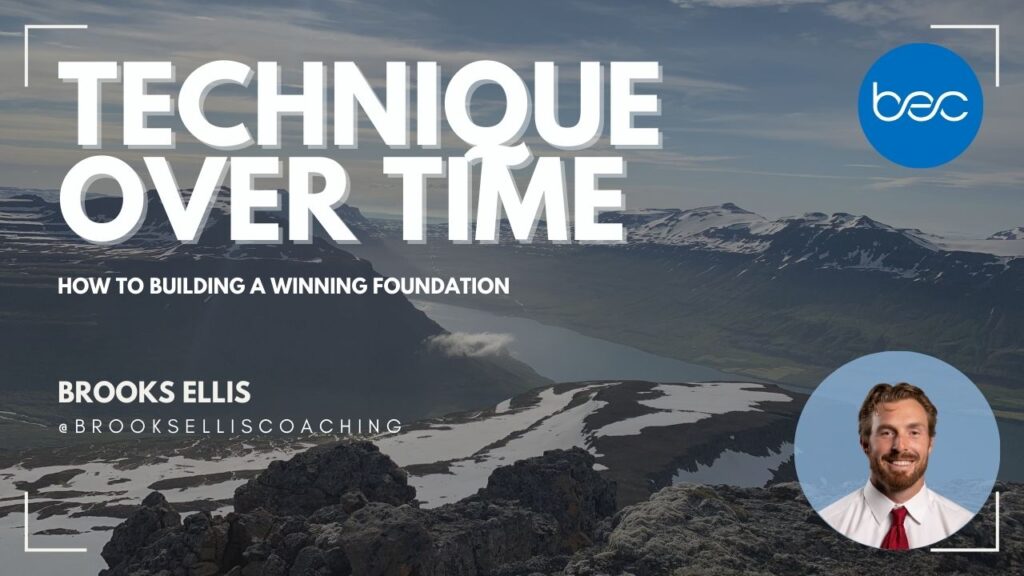How to be the hammer, not the nail
Growing up, the pre-game pep talk often included a simple question from my parents and coaches: “Would you rather be the hammer or the nail?” Although the answer seems obvious, the true challenge lies in embodying the hammer, which represents fearlessness and courage, critical character traits in football.
Football is a tough (or TUFF, as some of my clients like to call it) sport, and if you’re going to make it to the next level, toughness is the key. Does it mean you have to wrestle bears or tackle trees? Probably not, but if you don’t have that killer mindset like Khabib, the longest lightweight UFC champion in history, that you will dominate whatever steps into that ring with you, it will be hard to make it past even the first training camp.
So how do you cultivate that killer mindset that bulwarks all competitive drives, outpaces and outlasts any initial surge of adrenaline, and prevails over tragedy and failure?
In this blog, I’ll walk you step-by-step through the strategy that can transform a body pillow into an indomitable stone, unbreakable and hard to kill, a master of competition. It won’t be easy, and it won’t happen overnight. But if you’re up for it, it’ll be the skill that takes you further than any other skill in life.
The renowned psychologist and flow-state expert Mihaly Csikszentmihalyi, says:
“This ability to persevere despite obstacles and setbacks is the quality people most admire in others, and justly so; it is probably the most important trait not only for succeeding in life but for enjoying it as well.” (2)
What is toughness?
Toughness can be divided into two categories: mental and physical. Physical toughness is the oe you can see, and it requires physical risk and even sacrifice to your body, while mental requires a psychological risk to your psyche or ego. Either way: No risk, no reward.
However, mental toughness encompasses both. When you decide to push through a challenging workout, you’re mentally telling your body to overcome its pain or fatigue signal. When you throw your body into a large, angry opponent, mentally, you’re going against your natural instinct to protect yourself, which has the outward result of preserving the physical body. Thus, the mind and probably the spirit, too, control the physical toughness you exude.
Now, these signals are there for a reason. We must have these protective mechanisms; otherwise, we could theoretically voluntarily run into a pit of fire without feeling anything despite our skin burning off. That’s not good.
Toughness requires perseverance to continue forward consistently and persistently despite obstacles (1) and to overcome that internal signal that tells us to run. Synthesized with a goal worth competing for, which aligns with your values and toughness, the ability to endure and be unbreakable ensues.
Sometimes, this fear response can become overwhelming. So how do you overcome that fear and BUILD the ability to attack these obstacles and persist?
Get comfortable being uncomfortable
The body likes to be efficient. It thrives on challenges and the feeling that we’re getting better. When allowed to maintain the status quo, perceiving challenges as a threat, the body’s instinct is to move away and conserve energy. It wants to protect and be comfortable.
If we live in comfort, we aren’t challenged. If we aren’t challenged, we get sick quickly and die faster. In the book “Sitting Kills, Moving Heals,” NASA researcher Joan Vernikos illustrates how astronauts, when placed in zero gravity while in space, age ten times faster than on Earth. This means that sitting, not moving, and not being challenged is DEADLY to our health. When they come back to Earth, they regain their previous health. (4) Gravity, a consistent challenge for us all, is necessary for life on Earth.
We must actively decide to challenge ourselves.
This is the adventurer’s call, Abraham’s call in the Bible. He has an incredible life, all the money in the world, a great upbringing, and land up until a ripe old age, but God calls him to search for something greater, something more meaningful. It’s not until he leaves home that he fulfills God’s purpose for him and gives him even more than he could’ve imagined.
The lesson here is that greatness, fulfillment, and unlimited possibilities and satisfaction in growth live on the other side of comfort.
Steps to Cultivate Toughness
If your natural instinct is to run away, meaning you probably lack toughness, then try the following steps for slowly and methodically building it:
- Take note of when fear arises within you – What activities are you actively avoiding? Write them down.
- Be present when you sense your fears – Sense them and be present with them. Don’t try to run. Awareness is always the first step.
- Pain will set me free! – Phil Stutz in The Tools suggests using this phrase, internally or externally, when in the presence of fear: “Pain will set me free!” When you practice presence, you learn to respond instead of react, the process of retraining your instincts.
- Stack up small wins – When you attack small fears, you build confidence in overcoming minor obstacles. Soon, you’ll realize that the fear you thought was so overwhelming that you couldn’t move forward is now insignificant and that you can do anything you put your mind to.
- Maintain a HERO Cookie Jar – Keep track of all the fears you overcome with this method. Whenever you feel overwhelmed with fear, reach into this cookie jar to remind yourself of the power of this tool and your ability to overcome it.
This process is simple but must be actively and persistently applied for it to work. The world opens up when you don’t allow fear to stymie your progress.
Fail often, fail upward.
Another way to improve toughness is to fail often when facing challenging obstacles. When you fail and acknowledge that the failure is moving you in a positive direction, failure becomes your pathway, not your ceiling.
Hopefully, when you fail, you learn invaluable information and experiences you would never have otherwise.
When I started my coaching business, there were so many things I didn’t know how to do, and I made many mistakes along the way. If I had taken those as a sign that I’d never make it, boom, there goes my business. Acknowledging that failure is a learning process, I leaned into the discomfort of not having everything figured out and allowed failure to guide my path. When I fail, I know that’s a skill I must improve.
If you’re not failing daily, you’re not trying hard enough. If you do nothing but fail, that’s not the point either, and maybe we need to set some lower goals. Set the bar high enough to challenge yourself but low enough that you can reach it and move forward. Let’s have some fun along the way towards self-improvement!
Tiny wins and mega-celebrations are incredibly important.
Action Plan
This week, think about what scares you most. Is it a challenging conversation with a friend or coach? Is it standing up to someone who isn’t treating you right, or a drill in your sport in which you’re afraid to fully send it? What about something you’re scared to let go of, like how you want your life to look from the outside or a particular food or technology?
Remember, toughness requires us to know what prevents us from moving forward and taking action anyway. In short, toughness encapsulates various traits that exemplify your ability to withstand challenging times, endure the pain of defeat, and move forward with courage and persistence in pursuit of a higher good, YOUR highest good.
To be great, you must attack your fears and keep going. When you get used to this mindset, you’ll begin to LOVE the process of attacking your fears instead of dreading and falling victim to every fear that presents itself.
What lives on the other side is a world of UNLIMITED possibility.
Try it and see for yourself.
BEC Training
Trying to incorporate these ideas without the assistance of a coach will be difficult if not impossible to accomplish. Every great athlete, leader, person relied upon the help of mentors, coaches, and peers to help them become the best they could be.
Sign up for Brooks Ellis Coaching TODAY to get personalized coaching from former NFL players who truly care about the complete athletic and human development of their clients.
Schedule a FREE 15-minute consult here.
References:
- https://www.youtube.com/watch?v=PAWd_WJNVms
- Csikszentmihalyi M. (1990). Flow: The Psychology of Optimal Experience. New York, NY: Harper and Row.
- https://www.vocabulary.com/dictionary/persevere#:~:text=The%20verb%20persevere%20comes%20from,way%20despite%20obstacles%20or%20distractions.
- Vernikos J, Schneider VS. Space, gravity and the physiology of aging: parallel or convergent disciplines? A mini-review. Gerontology. 2010;56(2):157-66. doi: 10.1159/000252852. Epub 2009 Oct 23. PMID: 19851058.







